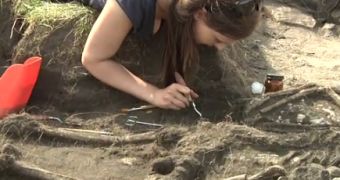Just yesterday, researchers working with Lund University and the Kalmar County museum announced that they had unearthed an ancient massacre site best described as a “Swedish Pompeii.”
The archaeologists detail that the site was dug out on the island of Öland, which sits fairly close to the Swedish coast. Preliminary investigations have revealed that the massacre took place at a fort some 1,600 years ago.
As explained on the official website for Lund University, archaeologists find it quite odd that, rather than being cremated, the people who died in this massacre were simply abandoned.
More so given the fact that, during the Migration Period in Scandinavia, cremation was a fairly common practice.
“Something terrible happened and everything just stopped. It’s a day in life of the Migration Period, and that’s completely unique. We have nothing to compare it to,” Dr. Helena Victor with the Kalmar County museum explained in a statement.
“Sandby borg ring fort is reminiscent of Pompeii in that all the bodies and houses have remained abandoned for 1,600 years after the massacre,” she further detailed.
Specialists suspect that, in the aftermath of the massacre, the site became taboo. Hence the fact that nobody returned there to cremate the bodies.
By the looks of it, the people whose bodies were found at this location were killed during a raid.
“There are so many bodies, it must have been a very violent and well organized raid,” Helene Wilhelmson, a PhD student at Lund University, said.
However, it appears that whoever raided the fort left behind several valuable items, which the archaeologists have discovered scattered around the site.
Presently, archaeologist Nicoló Dell’Unto with Lund University is working on piecing together 3D-models of this ancient crime scene. He expects that these models will lead to a better understanding of how and why this massacre took place.
Check out the video below to learn more about this archaeological find.

 14 DAY TRIAL //
14 DAY TRIAL // 